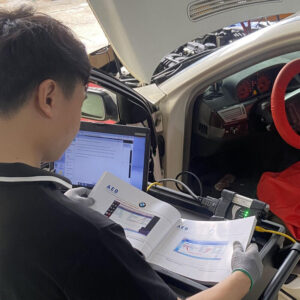
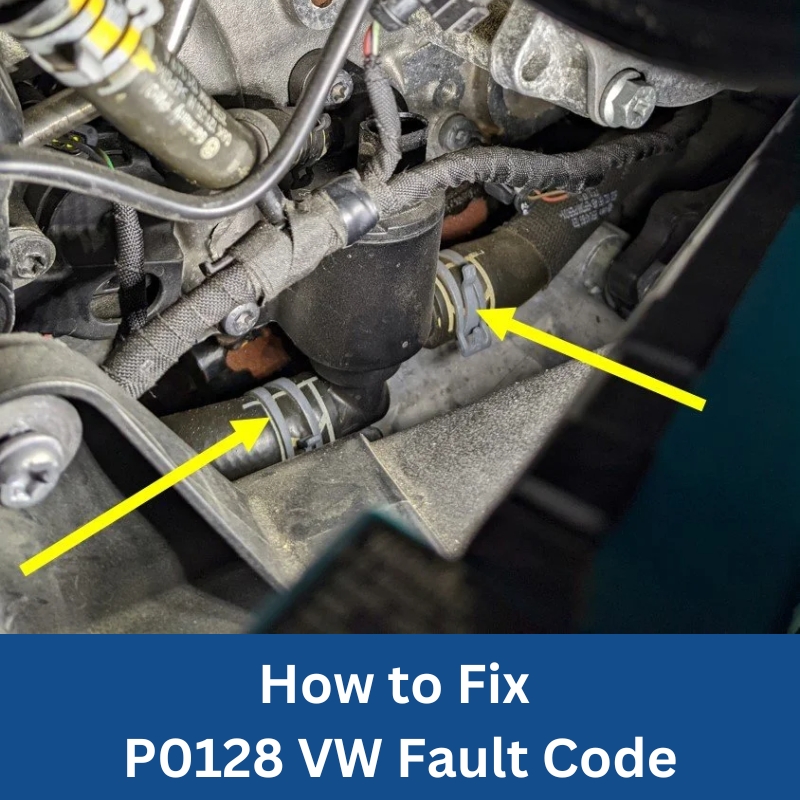
How to Fix P0128 VW Fault Code: Coolant Temperature Below Control Range Issue
Contents
- 1. What is The Meaning of The P0128 VW Trouble Code?
- 2. Causes of P0128 VW Error
- 2.1 Stuck Open Thermostat Valve: A Primary Offender
- 2.2 Faulty Engine Coolant Temperature (ECT) Sensor: Providing Incorrect Information
- 2.3 Low Coolant Level: Insufficient Heat Transfer
- 2.4 Coolant System Leaks or Weak Water Pump: Impaired Circulation
- 3. Symptoms of P0128 VW Error
- 4. Essential Tools and Software for Diagnosing a VW P0128 Fault
- Tools
- Software
- 5. How to Fix P0128 on VW Vehicles
- Conclusion
- Need Professional Assistance?
The P0128 VW error code appears when the Engine Control Unit (ECU) detects that the engine temperature has not reached the optimal level within the required time. This can impact fuel efficiency and overall engine performance. The code is commonly associated with the cooling system, particularly the thermostat valve.
1. What is The Meaning of The P0128 VW Trouble Code?
The P0128 diagnostic trouble code (DTC) for Volkswagen vehicles indicates that the Engine Control Unit (ECU) has detected that the engine coolant temperature has not reached the required operating temperature within a specified timeframe after the engine has started. This means your VW’s engine is taking longer than it should to warm up. While it might seem like a minor inconvenience, this delay can have several negative impacts on your vehicle’s performance and efficiency. Recognizing the underlying causes and symptoms is the first crucial step toward effectively fixing this issue.
2. Causes of P0128 VW Error
Several factors can contribute to the P0128 error code appearing in your Volkswagen. Identifying the root cause is essential for a lasting repair. Let’s delve into the common culprits:
2.1 Stuck Open Thermostat Valve: A Primary Offender
The thermostat valve plays a vital role in regulating the engine’s temperature. It restricts coolant flow to the radiator until the engine reaches its optimal operating temperature. If the thermostat is stuck in the open position, coolant continuously circulates through the radiator, preventing the engine from warming up quickly enough, especially in colder weather. This is often the most frequent reason for a P0128 code in VWs.
2.2 Faulty Engine Coolant Temperature (ECT) Sensor: Providing Incorrect Information
The Engine Coolant Temperature (ECT) sensor monitors the temperature of the engine coolant and sends this information to the ECU. If the ECT sensor is malfunctioning and providing inaccurate readings (either consistently low or erratic), the ECU might incorrectly determine that the engine has not reached the desired temperature, triggering the P0128 code even if the actual temperature is within range. According to a study by the National Institute for Automotive Service Excellence (ASE), faulty sensors are a common cause of inaccurate readings in vehicle systems.
2.3 Low Coolant Level: Insufficient Heat Transfer
The coolant is responsible for absorbing and dissipating heat from the engine. If the coolant level is significantly low, there might not be enough fluid to efficiently transfer heat, leading to a slower warm-up time. Low coolant can also indicate underlying issues like leaks in the cooling system. Reputable automotive manuals, such as those published by Haynes or Chilton, often highlight the importance of maintaining proper coolant levels.
2.4 Coolant System Leaks or Weak Water Pump: Impaired Circulation
A properly functioning water pump ensures that coolant circulates effectively throughout the engine and cooling system. If the water pump is weak or there are leaks in the system (hoses, radiator, water pump seals), the coolant may not circulate efficiently. This restricted flow can hinder the engine’s ability to reach its optimal temperature within the expected time. Identifying and addressing any leaks is crucial for maintaining a healthy cooling system.
3. Symptoms of P0128 VW Error
Being aware of the symptoms associated with a P0128 fault code can help you identify the problem early and take appropriate action. Here are the common signs to watch out for:
3.1 Illumination of the Check Engine Light: The Obvious Warning
The most direct symptom of a P0128 error is the activation of the Check Engine Light on your Volkswagen’s dashboard. This light indicates that the ECU has detected a problem within the vehicle’s systems, and in this case, it’s related to the engine’s warm-up time.
3.2 Prolonged Engine Warm-up Time: Noticeable Delay
You might notice that your engine takes significantly longer than usual to reach its normal operating temperature, especially during colder weather conditions. This is a key indicator of a potential P0128 issue. Comparing the warm-up time to what you’ve experienced previously can be helpful.
3.3 Reduction in Fuel Efficiency: An Unwelcome Consequence
When the engine operates below its optimal temperature, the ECU may command a richer fuel mixture to compensate. This increased fuel consumption can lead to a noticeable decrease in your Volkswagen’s fuel efficiency. Monitoring your miles per gallon (MPG) can help you identify this symptom. According to the U.S. Department of Energy, maintaining proper engine temperature is crucial for optimal fuel economy.
3.4 Inadequate Cabin Heating: Feeling the Chill
If the engine is not reaching its normal operating temperature quickly, the coolant circulating through the heater core may not be hot enough to provide sufficient warmth inside the cabin. You might notice that the car’s heater takes longer to produce warm air or doesn’t get as warm as it usually does.
4. Essential Tools and Software for Diagnosing a VW P0128 Fault
Tools
- OBD-II Scanner: Using VAS 6154 or VAS 5054A to diagnose and analyze fault codes.
- Infrared Temperature Gauge: To measure coolant temperature.
- Basic Hand Tools: Screwdrivers and wrenches for thermostat and sensor replacement.
- Coolant Fluid: To refill or replace coolant if necessary.
Software
- ODIS Service & ODIS Engineering (Offboard Diagnostic Information System): Helps diagnose the cooling system and update ECU software if needed.
5. How to Fix P0128 on VW Vehicles
5.1 Step 1: Initial Diagnosis with an OBD-II Scanner
-
Locate the OBD-II Port: This is typically found under the dashboard on the driver’s side of your Volkswagen. Refer to your owner’s manual if you’re unsure of its exact location.
-
Connect the Scanner: Plug your OBD-II scanner into the port.
-
Turn on the Ignition: Turn the ignition key to the “ON” position without starting the engine.
-
Read Error Codes: Navigate the scanner’s menu to read the stored fault codes. Confirm that P0128 is present. Note down any other codes that may also be present, as they could provide additional clues.
-
Analyze Live Data: Access the live data stream and look for the Engine Coolant Temperature (ECT) sensor reading. Start the engine and observe how the temperature changes over time. Compare the reported temperature with what you would expect under the current ambient conditions. For instance, a cold engine should show a temperature close to the outside air temperature. A faulty ECT sensor might show a drastically different or erratic reading. VAS 6154 or VAS 5054A allows you to graph this data for easier analysis.
5.2 Step 2: Inspecting the Coolant Level and System
-
Locate the Coolant Reservoir: This is usually a translucent plastic tank with markings indicating the minimum and maximum coolant levels. It’s often located in the engine bay.
-
Check the Coolant Level: Ensure the coolant level is between the “MIN” and “MAX” marks. Check when the engine is cold to get an accurate reading.
-
Inspect for Leaks: Carefully examine all coolant hoses, connections, the radiator, the water pump area, and the coolant reservoir for any signs of leaks (wet spots, dried coolant residue, or a noticeable smell of coolant). Address any leaks you find before proceeding.
-
Refill if Necessary: If the coolant level is low, refill it with the manufacturer-recommended type of coolant. Using the wrong type of coolant can damage the cooling system. Your owner’s manual will specify the correct coolant.
5.3 Step 3: Examining and Replacing the Thermostat Valve
-
Locate the Thermostat Housing: The thermostat is typically housed where the upper radiator hose connects to the engine. Consult your vehicle’s repair manual for the exact location.
-
Allow Engine to Cool: Ensure the engine has completely cooled down before attempting to work on the cooling system.
-
Drain Some Coolant: Partially drain the coolant system to a level below the thermostat housing. This will prevent excessive coolant spillage when you remove the thermostat. Refer to your repair manual for the proper draining procedure.
-
Remove the Thermostat Housing: Using the appropriate wrenches or sockets, remove the bolts or clamps securing the thermostat housing.
-
Inspect the Thermostat: Carefully remove the thermostat. Visually inspect it for any signs of damage, corrosion, or if it appears to be stuck in the open position. You might be able to manually try to move the valve; a healthy thermostat should move smoothly and return to its closed position when released (when cold).
-
Test the Thermostat (Optional): You can further test the thermostat by suspending it in a container of hot water and observing the temperature at which it starts to open and how fully it opens. Compare these temperatures to the specifications in your vehicle’s repair manual.
-
Install the New Thermostat: If the thermostat is faulty or you suspect it’s the cause, replace it with a new one of the correct type and temperature rating for your Volkswagen model. Ensure the new thermostat is installed in the correct orientation (usually with the spring facing the engine).
-
Reinstall the Thermostat Housing: Clean the mating surfaces of the thermostat housing and the engine block. Install a new gasket or O-ring (if required) and reattach the housing, tightening the bolts to the manufacturer-specified torque.
-
Refill the Coolant: Refill the cooling system with the correct type and amount of coolant.
-
Bleed the Cooling System: It’s crucial to remove any air pockets from the cooling system after refilling. Follow the bleeding procedure outlined in your vehicle’s repair manual. This often involves running the engine with the radiator cap off (initially) and allowing air bubbles to escape.
5.4 Step 4: Inspecting the Engine Coolant Temperature (ECT) Sensor
-
Locate the ECT Sensor: The ECT sensor is typically located on the engine block or cylinder head, often near the thermostat housing. Refer to your vehicle’s repair manual for its exact location. It usually has an electrical connector attached to it.
-
Disconnect the Electrical Connector: Carefully disconnect the electrical connector from the ECT sensor.
-
Inspect Wiring and Connector: Examine the wiring and the connector for any signs of damage, corrosion, or loose connections. Repair or replace any damaged wiring or connectors.
-
Test Sensor Resistance (with Multimeter): With the engine cold, use a multimeter to measure the resistance across the terminals of the ECT sensor. Refer to your vehicle’s repair manual for the expected resistance value at the current temperature. As the temperature changes, the resistance of a functioning ECT sensor should also change predictably. If the resistance is significantly out of range or doesn’t change as expected, the sensor is likely faulty.
-
Test Sensor Voltage (with Multimeter): With the ignition ON (engine OFF), use a multimeter to check the voltage at the sensor’s connector (on the wiring harness side). There should typically be a reference voltage (usually 5 volts). If there is no voltage, there might be an issue with the wiring or the ECU.
-
Replace the ECT Sensor (if faulty): If the sensor tests faulty, unscrew it from the engine and install a new one of the correct type for your Volkswagen model. Be careful not to overtighten it.
-
Reconnect the Electrical Connector: Reattach the electrical connector to the new ECT sensor.
5.5 Step 5: Clearing the Error Code and Testing the Vehicle
-
Turn on the Ignition: Turn the ignition key to the “ON” position without starting the engine.
-
Clear the Error Code: Use ODIS Service to clear the P0128 fault code from the ECU’s memory.
-
Start the Engine: Start the engine and let it run.
-
Monitor Temperature Readings: Use your OBD-II scanner to monitor the live data from the ECT sensor. Observe how quickly the engine temperature rises and whether it reaches the normal operating range.
-
Test Drive the Vehicle: Take your Volkswagen for a test drive under various driving conditions to ensure that the engine warms up normally, the Check Engine Light does not reappear, and the cabin heating functions correctly.
-
Re-scan for Codes (Optional): After the test drive, you can re-scan the ECU for any new or returning fault codes.
Conclusion
The P0128 error code in VW vehicles is typically caused by a faulty thermostat valve or engine coolant temperature sensor. Inspecting the cooling system, replacing defective components, and ensuring proper coolant circulation can effectively resolve the issue. If the problem persists, checking for leaks or updating the ECU software may be necessary to restore optimal engine performance.
Need Professional Assistance?
If you’re still experiencing issues with your VW vehicle, AutoExplain is here to help! We provide expert car diagnostics, coding, and programming support. Contact us via WhatsApp at +1(936)2896695 for professional assistance.

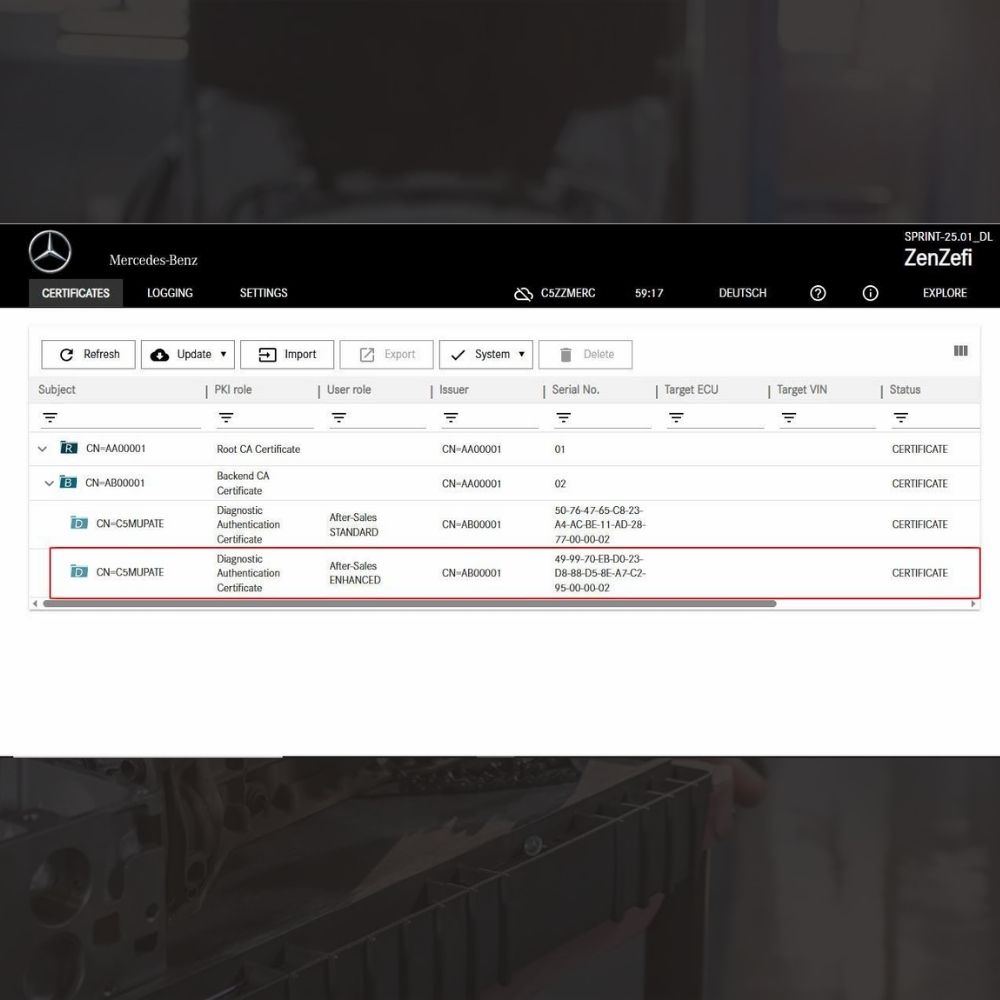
New Mercedes Car Coding Solution with ZenZefi certificate for DTS Monaco 9.02
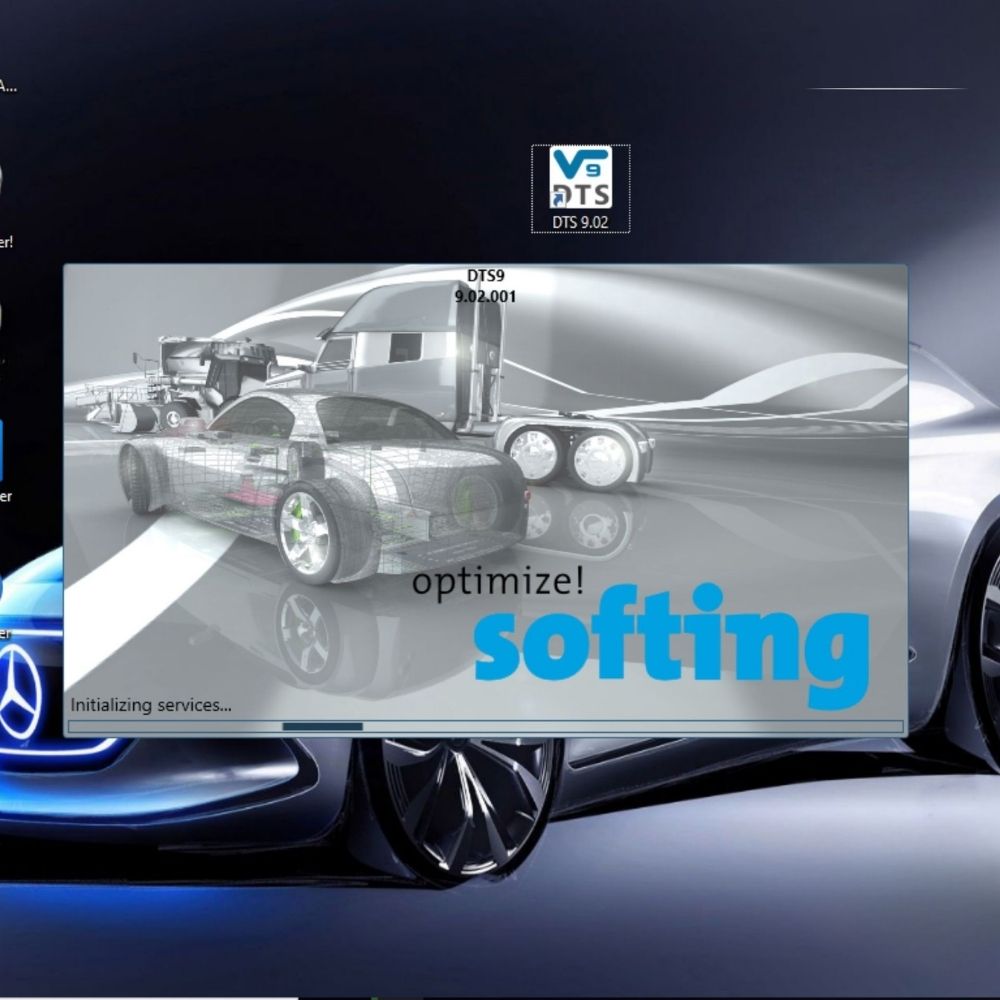
What is DTS Monaco? Key Functions of DTS Monaco Software
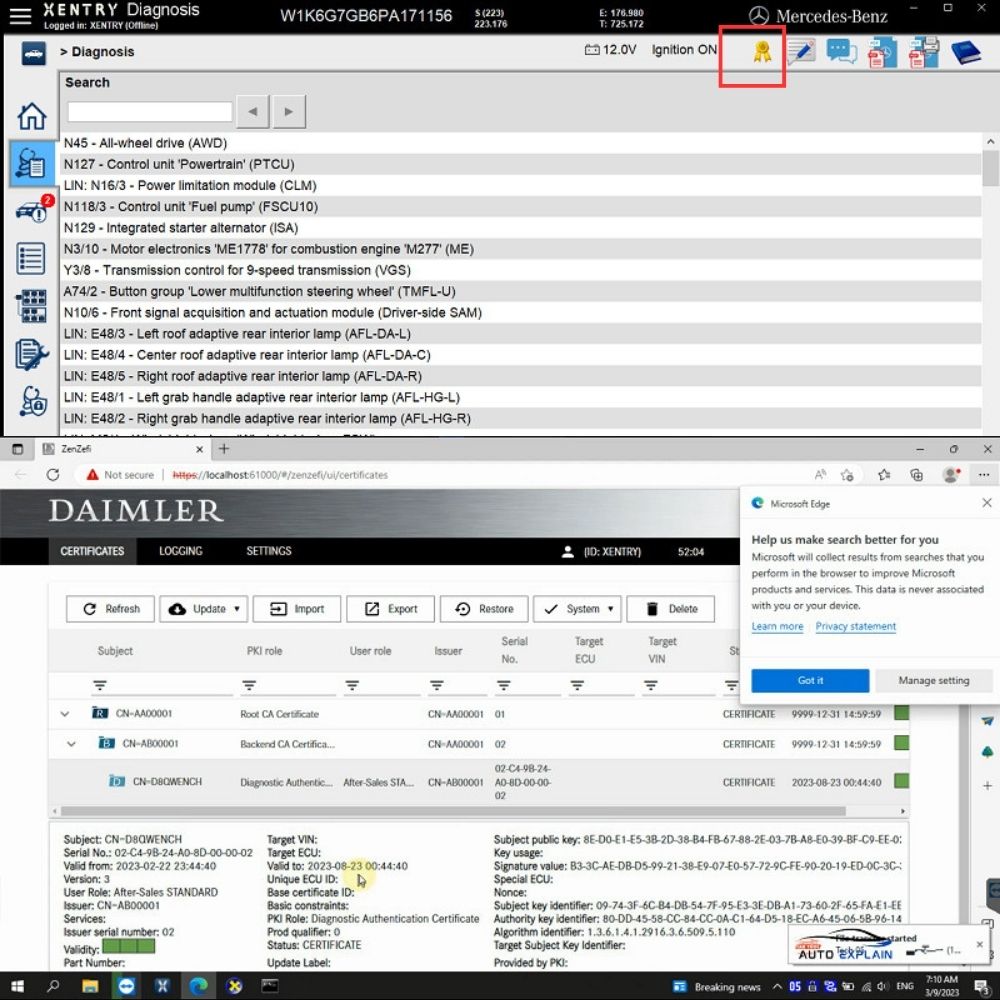
What is the Xentry Certificate Zenzefi? Why You Need It, and When It Is Required?



New Mercedes Car Coding Solution with ZenZefi certificate for DTS Monaco 9.02



